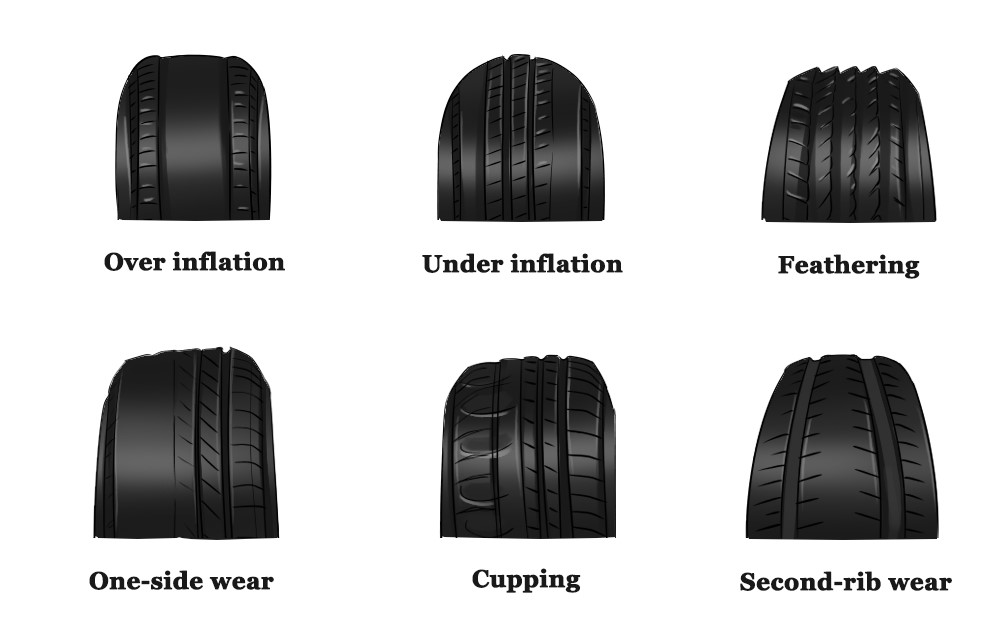Blog

Know how to read tire wear:
You should check your tires for wear at least once a month and before and after long trips. You check them to determine whether you need to buy new tires, have your wheels balanced, have your wheels aligned, or change your driving habits.
Taking time to rotate your tires is useless unless you know how to "read" the wear on your tires.
Tires that show excessive wear on the outside edges of the tires are typical when the tire pressure is under inflated frequently. When a tire is under inflated, it tends to "ride" on the inside and outside edge more than it should. This is why both sides are worn out.
Over inflation is the direct opposite of under-inflated tires: those that are over inflated (past the vehicle's recommended tire pressure) tend to be worn out more in the center. This is due to the fact that when inflated, the tire will grow and ride on the center more than evenly as it's designed.
Bad suspension alignment is when the front-end suspension components are damaged, or not properly aligned. In this case, it's an example of what is called "toe-in" or the tire leaning more to the inside of the car than on the outside. If the wear is on the outside of the tire, that's "toe-out." In either case, this is a warning sign that you should have your suspension components checked; as it's likely that the CV joint or tie rods are damaged, worn out or may break.
Cupping, or un-even tire wear due to a shock or strut that is worn out, is a signal that other issues with your car exists and should be fixed before too long.
When tires have extensive wear patterns like this, they shouldn't be rotated. You should fix what's causing the problem and purchase new tires.
Posted on March 2019,27 // Author: Admin